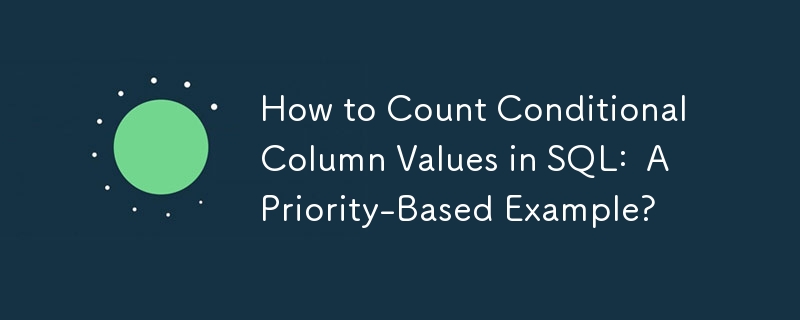Found a total of 10000 related content

How to implement the Proxy design pattern in Java?
Article Introduction:To implement the proxy design pattern in Java, you first need to define a common interface, then implement the real topic class, then create a proxy class to control access to real objects, and finally use the proxy in the main program. 1. Define the public interface Image to ensure that the proxy and real objects are interchangeable; 2. Implement the RealImage class to be responsible for the loading and display of actual images; 3. Create the ImageProxy class to implement lazy loading in its display method; 4. Use ImageProxy in the Main class to delay loading image resources and improve efficiency. This mode supports multiple uses such as security control, logging, or remote calls.
2025-07-13
comment 0
971

Python Metaclasses Deep Dive
Article Introduction:Metaclass is a "template" of a class, used to control how classes are created, suitable for scenarios where framework design or large number of custom class behaviors are performed. It customizes the generation logic of the class by inheriting the type and rewriting the new or init methods. Common uses include automatic registration of subclasses, unified interface constraints, dynamic modification of class attributes, realizing singleton mode and ORM framework design, etc. When using it, you need to pay attention to avoid abuse, high debugging complexity, unintuitive reading order, and compatibility issues. Simple needs can be replaced by decorators.
2025-07-18
comment 0
642

How to implement a thread-safe singleton pattern in Java?
Article Introduction:There are three main ways to implement thread-safe singleton mode: First, use double check lock and volatile keywords, enter the synchronization block after the first check that the instance is empty, and confirm again whether it is empty, ensuring that only one instance is created; second, use static inner class (BillPugh implementation) to ensure thread safety during class loading through JVM, delay loading and no explicit synchronization is required; third, use enumeration to implement singleton, which is naturally thread-safe and can prevent reflection and serialization attacks, but may not be suitable for complex initialization or inheritance. In addition, the simple lazy style affects performance because each call needs to be synchronized, and is not recommended to use in a multi-threaded environment. Choose different implementation methods according to your needs to take into account security, performance and simplicity
2025-07-13
comment 0
501
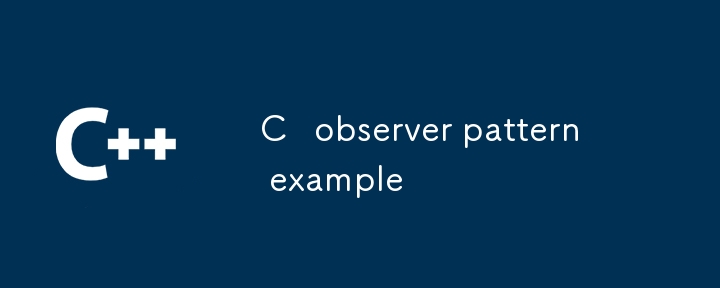
C observer pattern example
Article Introduction:Implementing the observer mode in C can be accomplished by defining the observer interface, the observed class and the specific observer class. 1. Define the Observer abstract class and declare the update pure virtual function; 2. Implement the Subject class to maintain the weak_ptr observer list, and provide registration, removal and notification methods; 3. Create a specific observer such as DisplayDevice to implement update logic; 4. Create a shared object in the main function and test the temperature update and observer removal, and finally output the corresponding information. The design uses intelligent pointers to avoid memory leakage and realize automatic cleaning, supports loose coupling and scalability, and is suitable for situation monitoring and other scenarios.
2025-08-24
comment 0
680

C CRTP example
Article Introduction:CRTP realizes static polymorphism for derived class types through base class template parameters. 1. The base class uses template parameters Derived to obtain derived class types, and calls derived class methods to achieve static distribution through static_cast; 2. All classes that inherit Cloneable automatically obtain type-safe clone() functions; 3. Advantages include virtual function overhead, high parsing performance during compilation, code reuse and type safety; 4. Notes include derived classes that must correctly inherit Base, and implement the desired methods of the base class, and cannot directly manage different derived class objects through base class pointers. This mode is widely used in high-performance libraries such as Eigen and Boost.
2025-07-30
comment 0
345
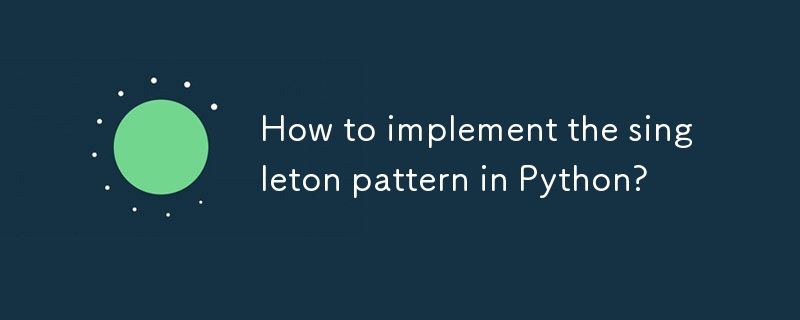
How to implement the singleton pattern in Python?
Article Introduction:There are three main ways to implement Singleton mode in Python: 1. Use a decorator to control the creation and reuse of class instances by defining closure functions. The advantages are that the code is clear and reusable, but the debugging is not intuitive enough; 2. Rewrite the \_\_new\_\_ method to maintain the instances within the class. The advantages are more native and object-oriented, but pay attention to multi-threaded safety issues; 3. Use the natural singleton characteristics of the module to directly create instances in the module and export and use them, which is simple and easy to maintain but poor flexibility. Choose the appropriate method according to actual needs: flexibly control the selection of decorators, object-oriented selection of \_\_new\_\_, and use the modules simply globally.
2025-07-14
comment 0
346

What are design patterns, and how can they be used in PHP?
Article Introduction:Common applications of design patterns in PHP include Singleton, Factory, Observer, and Strategy. They are reusable templates to solve duplication problems, not code that is directly copied. Use scenarios include code duplication, project size expansion, improved testability and reduced dependency. The application steps are: first understand the problem, then select the appropriate mode, keep it simple to implement, and can be reconstructed and optimized later. For example, Factory mode can be used to return different database instances based on configuration, thereby simplifying maintenance.
2025-06-23
comment 0
783

JavaScript Design Patterns for Maintainable Code
Article Introduction:The module mode encapsulates private state through closures, uses IIFE to create independent scopes and exposes limited interfaces, effectively avoiding global pollution and improving testability; 2. The factory mode concentrates object creation logic, returns different types of object instances according to parameters, reducing the client's dependence on specific classes; 3. The observer mode establishes a one-to-many event notification mechanism to decouple publishers and subscribers, and is suitable for event-driven systems; 4. The singleton mode ensures that there is only one instance of a class and provides global access points, which are often used in loggers, configuration management and other scenarios; 5. The decorator mode dynamically adds functions on the basis of not modifying the original object, supports separation of concerns, and can be used for cross-cutting logic such as performance monitoring, permission verification; the design mode should be selected based on specific requirements: encapsulate private numbers
2025-07-27
comment 0
493

How do abstract classes differ from interfaces in PHP, and when would you use each?
Article Introduction:Abstract classes and interfaces have their own uses in PHP. 1. Abstract classes are used to share code, support constructors and control access, and include abstract methods and concrete methods. 2. The interface is used to define behavior contracts. All methods must be implemented and are public by default, and support multiple inheritance. 3. Since PHP8, the interface can contain default methods to implement, but there is still no constructor or state. 4. When using abstract classes, you need to encapsulate implementation details; when using interfaces, you need to define cross-class behavior or build plug-in systems. 5. Can be used in combination: abstract classes implement interfaces or combine multiple interfaces into one abstract class. Select whether the structure plus sharing behavior (abstract class) or only the structure (interface).
2025-06-04
comment 0
1147
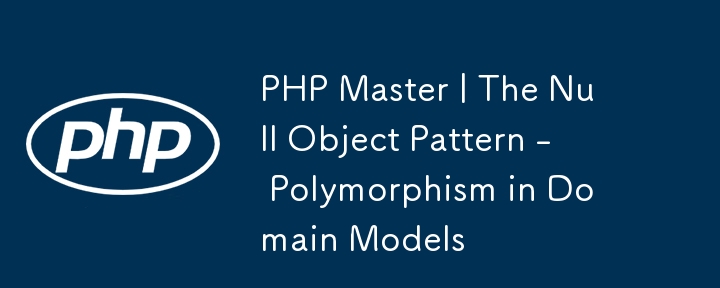
PHP Master | The Null Object Pattern - Polymorphism in Domain Models
Article Introduction:Core points
The empty object pattern is a design pattern that uses polymorphism to reduce conditional code, making the code more concise and easy to maintain. It provides a non-functional object that can replace the real object, thus eliminating the need for null value checks.
Empty object mode can be used in conjunction with other design modes, such as factory mode creating and returning empty objects, or policy mode changing the behavior of an object at runtime.
The potential disadvantage of the empty object pattern is that it may lead to the creation of unnecessary objects and increase memory usage. It may also make the code more complicated because additional classes and interfaces are required.
To implement the empty object pattern, you need to create an empty object class that implements the same interface as the real object. This empty object provides a default implementation for all methods in the interface, allowing it to replace the real object. This makes
2025-02-25
comment 0
645

Methods for implementing cache acceleration in PHP and MySQL combined with Redis
Article Introduction:Redis is needed to speed up the combination of PHP and MySQL, because Redis can significantly increase data access speed and reduce database query burden. Specific methods include: 1. Cache MySQL query results into Redis to reduce the number of direct queries; 2. Use publish-subscribe mode or transaction to ensure cache consistency; 3. Prevent cache penetration through Bloom filters; 4. Set different expiration times or use distributed locks to avoid cache avalanches; 5. Implement hierarchical cache, data warm-up and dynamic adjustment strategies to further optimize performance.
2025-05-28
comment 0
499

How to implement multi-time zone date-time conversion and aggregation in MySQL and PHP
Article Introduction:This tutorial is designed to guide developers on how to efficiently handle multi-time zone datetimes in MySQL databases and PHP applications. We will explore in-depth MySQL's CONVERT_TZ function and its time zone table configuration, as well as the flexible use of the PHP DateTime class. The article will focus on how to implement MIN/MAX data aggregation based on the user-specified time zone boundary, provide detailed code examples, precautions and performance optimization suggestions to ensure the accuracy and consistency of date and time data in global applications.
2025-08-25
comment 0
730
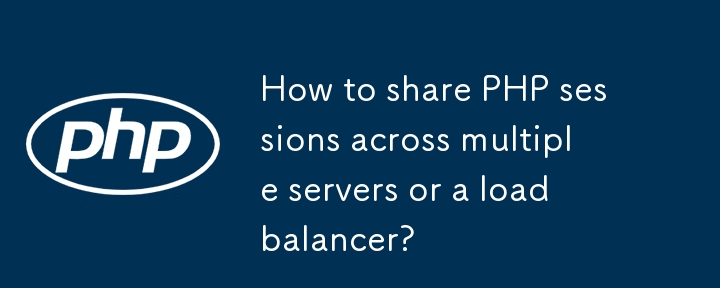
How to share PHP sessions across multiple servers or a load balancer?
Article Introduction:Using centralized storage to solve the Session sharing problem under PHP load balancing is to change local file storage to unified storage. 1. Use Redis or Memcached as centralized storage, modify the php.ini configuration session.save_handler and session.save_path to point to the Redis or Memcached instance to ensure that all servers read and write the same data; 2. Store the Session into MySQL or PostgreSQL through the custom SessionHandler class, which is suitable for existing databases. You need to implement read, write, destroy and other methods and call session_
2025-07-18
comment 0
448

Mastering Complex Sorting in PHP with `usort` on Multidimensional Arrays
Article Introduction:usort() is the preferred method for handling complex sorting of PHP multidimensional arrays. It supports multiple sorting conditions, mixed data types, and dynamic priorities through custom comparison functions. 1. When using usort(), the array and callback function are passed, the callback receives two subarray elements and returns the comparison result, and uses functions such as operators or strcasecmp() to implement sorting logic; 2. For multi-condition sorting, the fields and directions can be dynamically specified through the createSortCallback() function, first in descending order of score and then ascending order in age; 3. String sorting should be done using strcasecmp() to achieve case insensitiveness, or the Collator class supports internationalized characters; 4. Pay attention to usort(
2025-08-08
comment 0
223
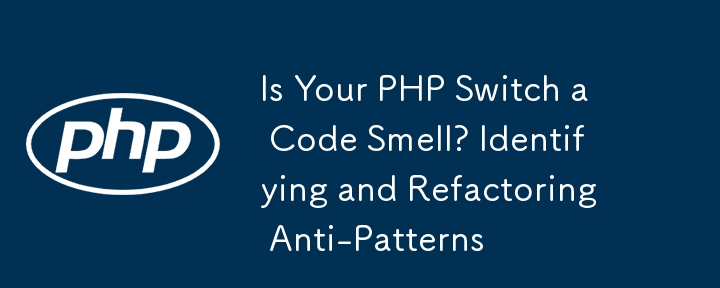
Is Your PHP Switch a Code Smell? Identifying and Refactoring Anti-Patterns
Article Introduction:Yes, the switch statement in PHP itself is not a code smell, but when it is repeated in multiple files, contains too many branches, is tightly coupled with business logic, violates the principle of single responsibility, or makes judgments based on object types, it becomes an anti-pattern; 1. Use policy mode processing factory: define processing interfaces and concrete classes, map types to processors through factory mapping, add new types only requires registration and no modification of existing code; 2. Use class-based distribution (polymorphism): let the object itself determine behavior, implement concrete logic by inheriting abstract classes, and directly execute methods when calling without switching; 3. Use closure mapping (suitable for simple scenarios): Use associative arrays to store the mapping of type to closures, avoid branch structure but are less testable; 4. PHP8 can be used
2025-08-02
comment 0
269
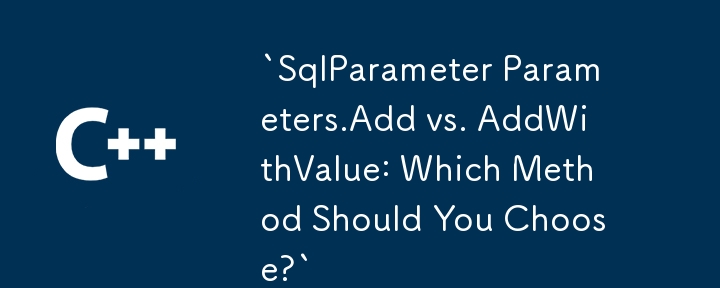

Dave The Diver: How To Catch Spider Crabs
Article Introduction:In Dave The Diver, there are some creatures that are not easy to catch. Or, catch alive that is. The spider crab is one of those very species, making it seem like the only way to bring these crustaceans back up to land is to viciously crack them up w
2025-01-10
comment 0
930

Prepare for Interview Like a Pro with Interview Questions CLI
Article Introduction:Prepare for Interview Like a Pro with Interview Questions CLI
What is the Interview Questions CLI?
The Interview Questions CLI is a command-line tool designed for JavaScript learners and developers who want to enhance their interview
2025-01-10
comment 0
1550

















